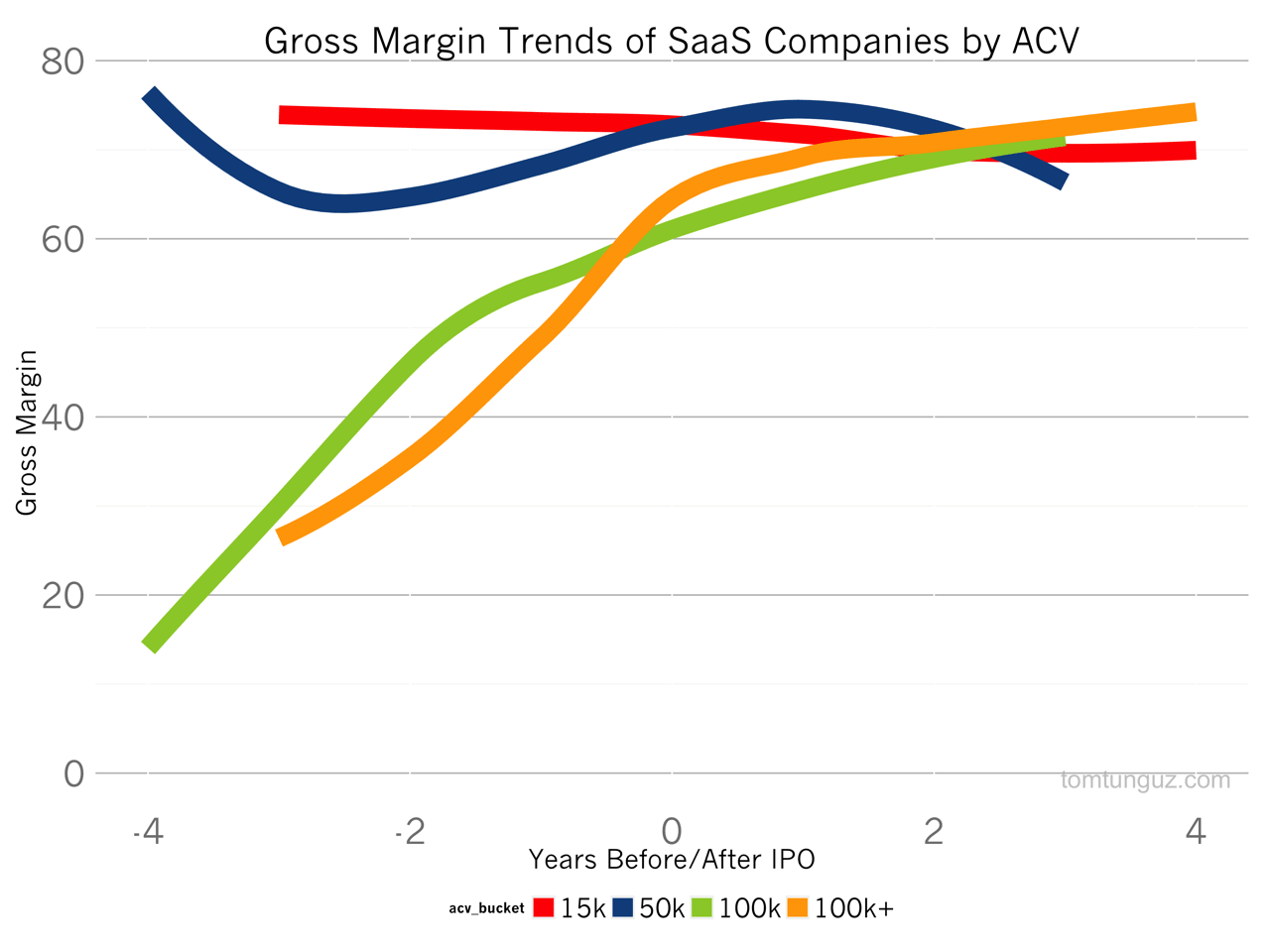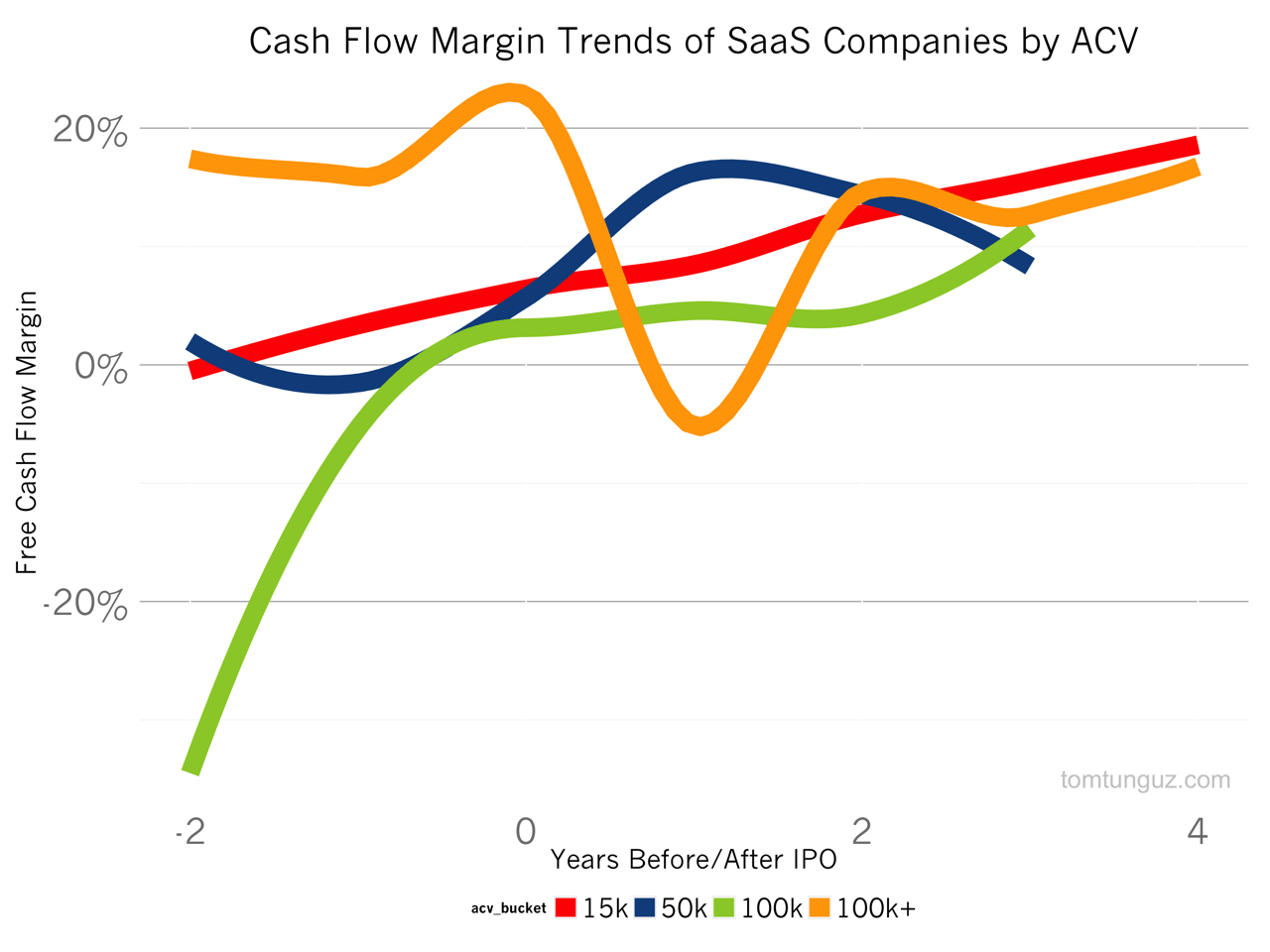We’ve seen a sudden decline in SaaS pricing. In the past 3 years, the median Average Revenue by Customer of SaaS companies going public has dropped by about 70%. But has the shift towards smaller customers, shorter and faster sales cycles created less profitable businesses?
Not at all.
The chart above shows the gross margin trends of public SaaS companies broken down by their ACV (average customer value). At or close to IPO, the median company, irrespective of price point, operates at about 70% gross margin.
But, SaaS companies with ACVs of $50k or less record substantially better gross margins in their early days, 1 to 4 years before IPO, than startups with $100k+ ACVs.
Unlike companies offering lower price point products, SaaS companies selling $100k+ contracts often bundle professional services with software to customize the software and train the client’s users how to use it. Most professional services businesses are run at zero or negative gross margin. For example, Workday operated their PS group at Hortonworks operates at -34% gross margin. Workday’s operates at 6% margin.
These very low margins depress the business’ overall gross margin substantially, particularly in the early days, when professional services accounts for 50% or more of revenues.
Next, let’s look at the true profitability of SaaS companies by ACV. To do that, we’ll examine the cash flow margin (how much of the revenues of the business become true profit).
The median SaaS company operates at 7-10% free cash flow at at IPO. But the higher price point companies operate again at substantially lower cash flow margins because of professional services. As all these companies approach IPO, their cash flow margins converge and become statistically indistinguishable.
Despite the decline in price points catalyzed by the consumerization of IT, startups are finding ways to develop efficient and profitable companies regardless.

